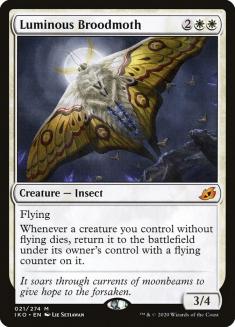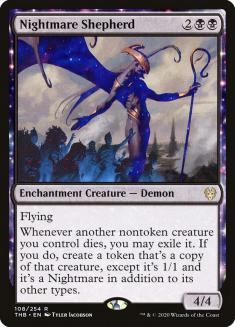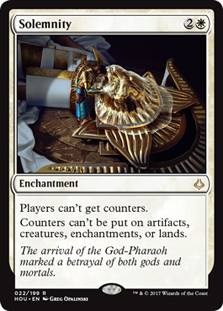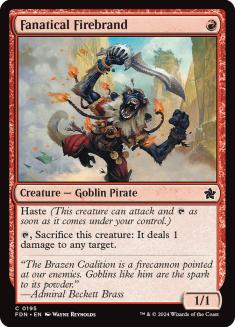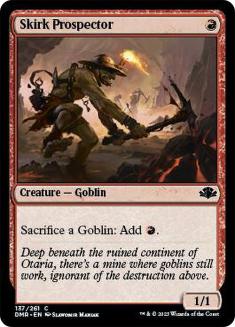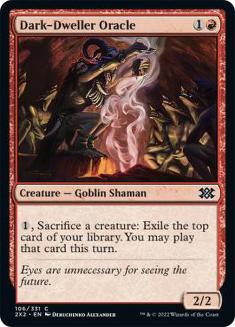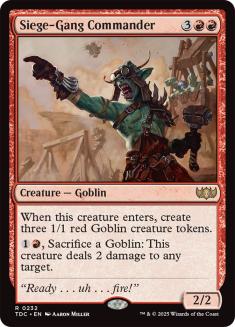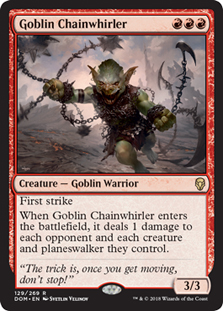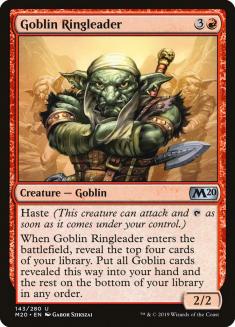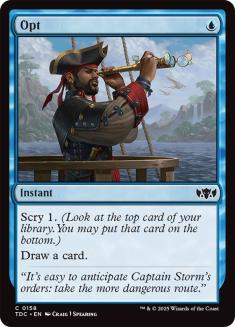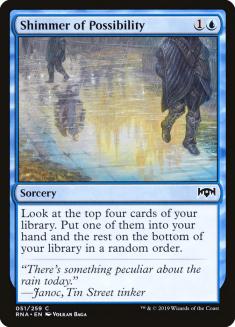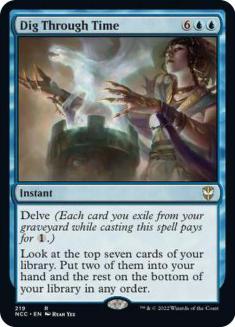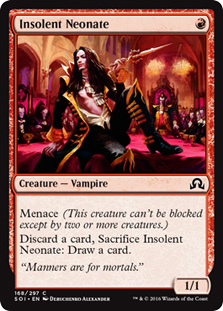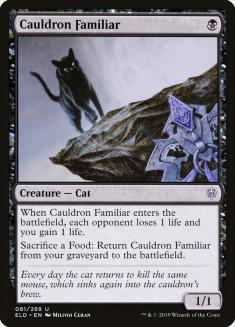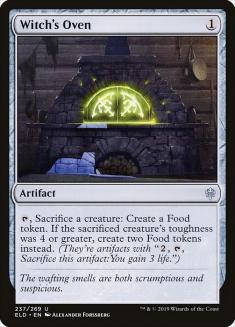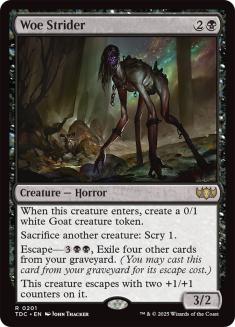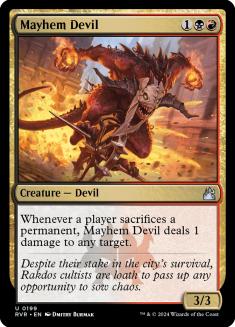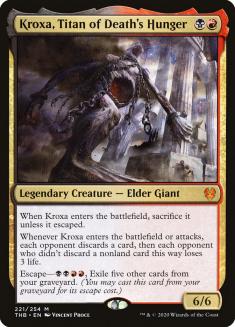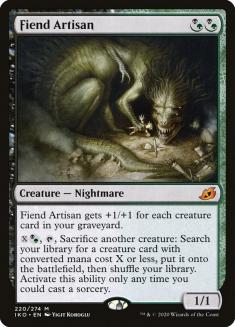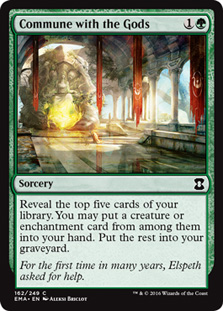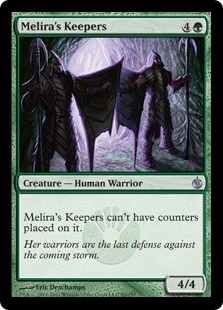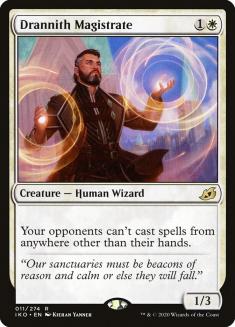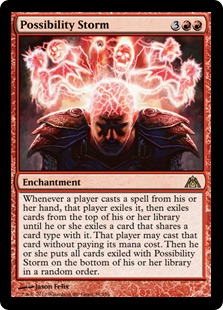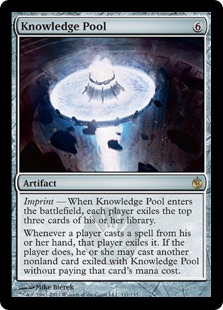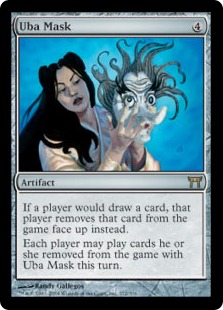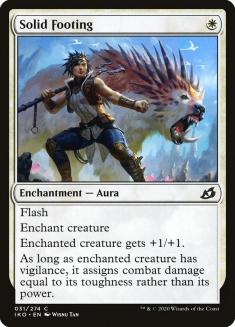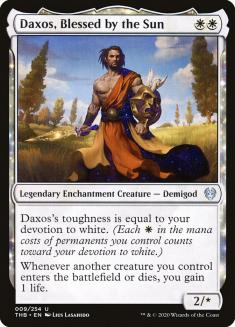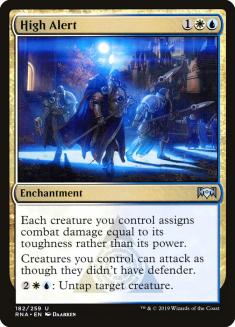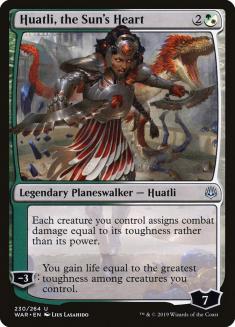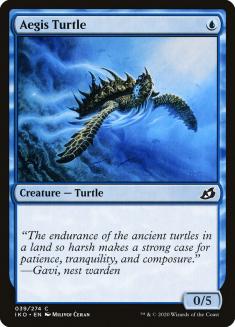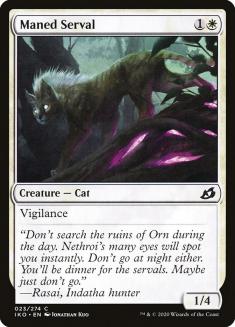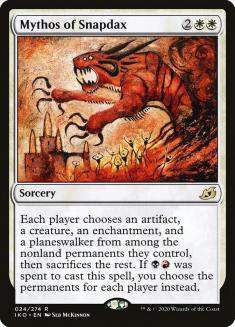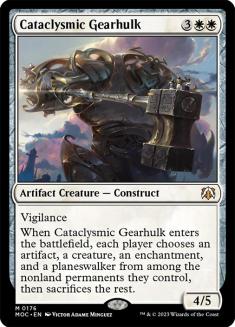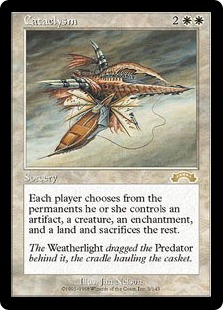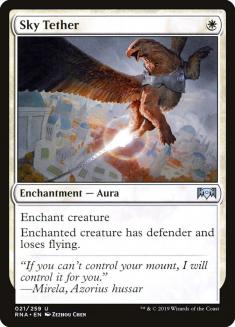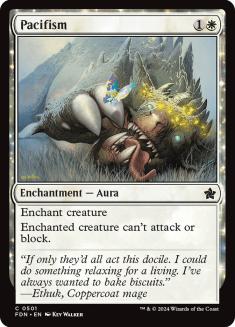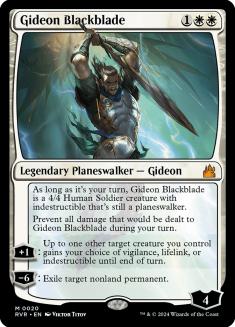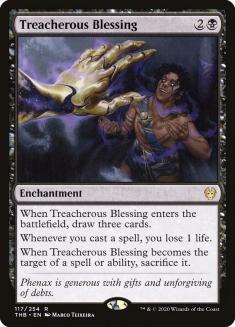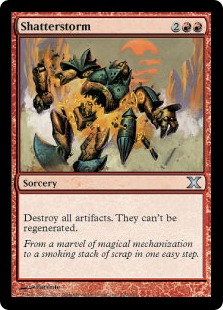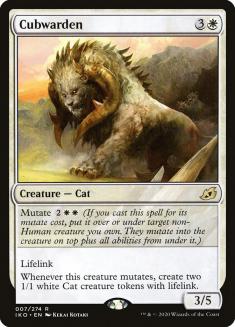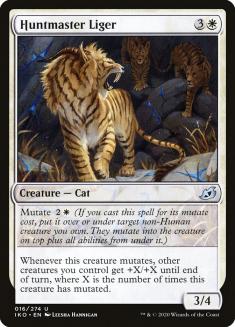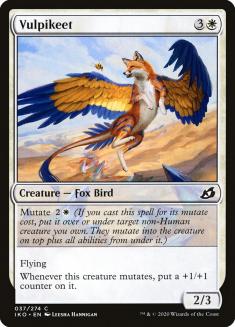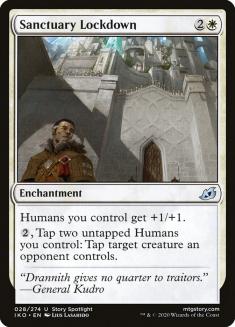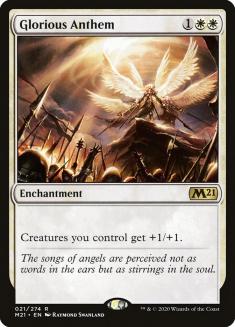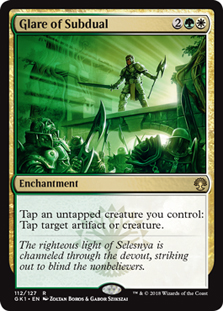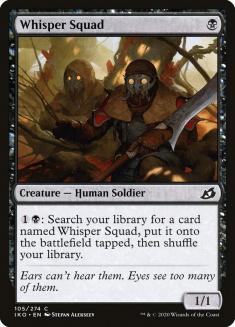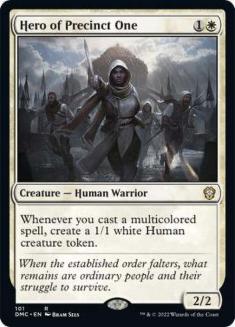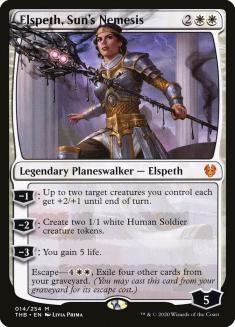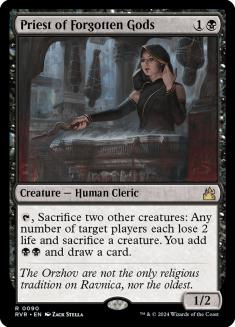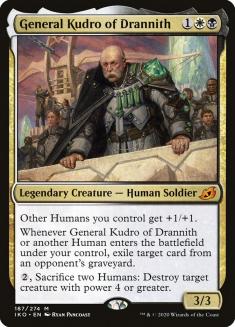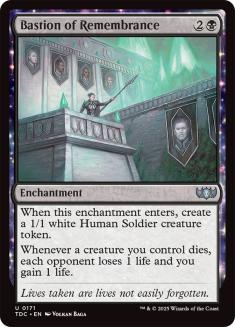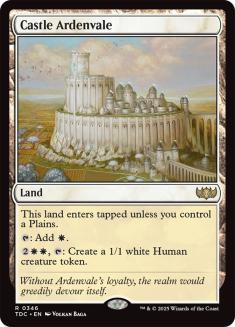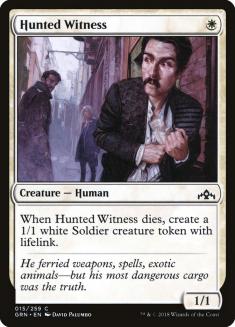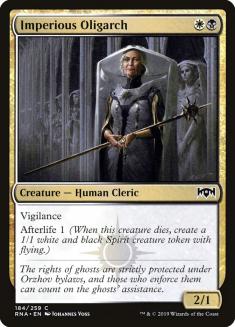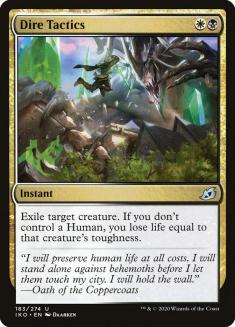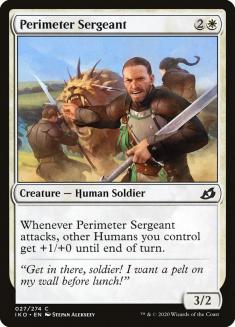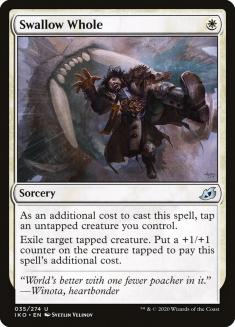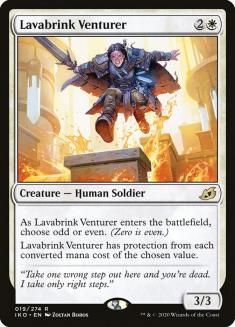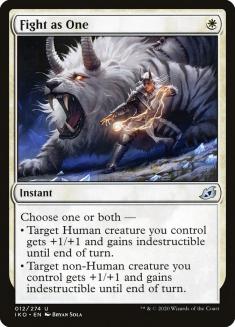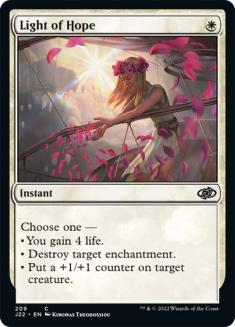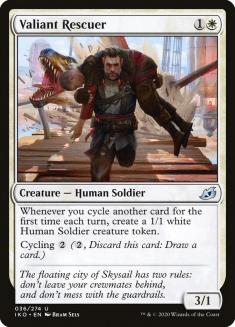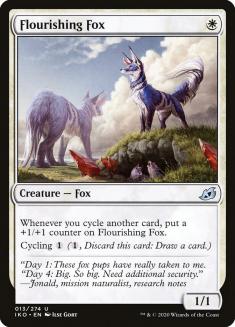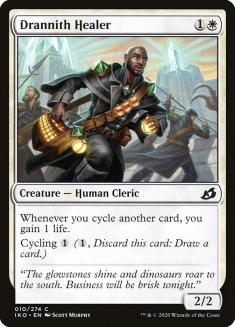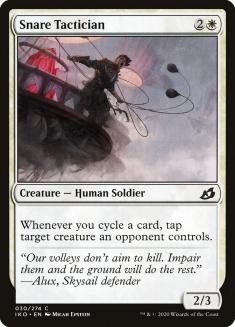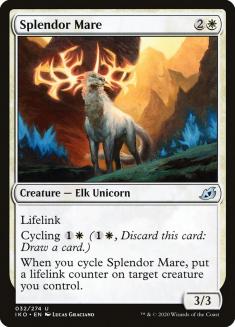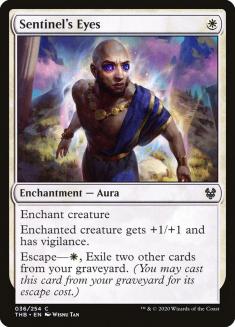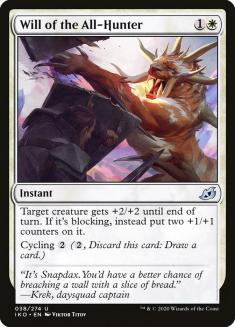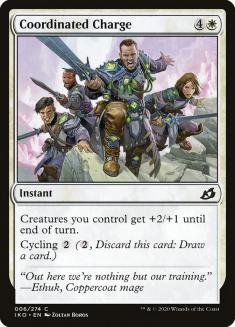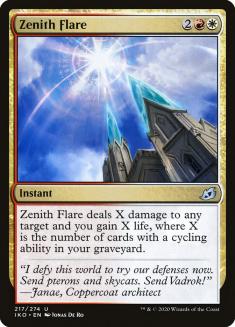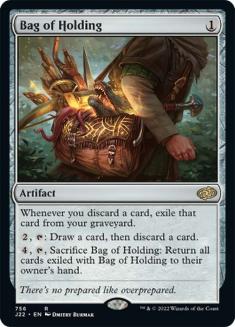Ikoria: Lair of Behemoths has a lot of powerful new cards. Let’s start our week long breakdown with what white offers and how to use them effectively.
Luminous Broodmoth
There are two basic approaches to Luminous Broodmoth:
- Combos
- Value
In the combo approach, we’re looking to exploit the advantages of its passive ability by overcoming the inherent limitation.
Strengths: Luminous Broodmoth turns what is normally a “bad” event (your creature dying) into a good event (you get the card back, you save all the mana of casting it, and it gains flying).
Weaknesses: Luminous Broodmoth only works on non-flyers, and usually only once, as they’re supposed to come back with flying.
Opportunity: This ability is quite strong with zero-activation sacrifice effects, letting us reliably kill our creatures when we want and retrigger their abilities. If we can get around the limitation from the flying counter, we could theoretically sacrifice something as many times as we want.
If used for “value,” the card plays out similarly to Nightmare Shepherd. If we’re looking to combo, the best option is probably Solemnity.
In Pioneer, Solemnity makes players unable to put counters on anything, including Broodmoth’s flying counter. Add a creature that can profitably sacrifice itself the turn it’s cast, and we’ve got a loop.
With our combo on the battlefield, we can sacrifice Fanatical Firebrand to deal one to our opponent, get it back with the Broomoth (without a flying counter because of Solemnity), and repeat.
Creatures (31)
- 1 Siege-Gang Commander
- 4 Goblin Ringleader
- 4 Skirk Prospector
- 4 Goblin Rabblemaster
- 4 Fanatical Firebrand
- 2 Goblin Chainwhirler
- 4 Goblin Instigator
- 4 Dark-Dweller Oracle
- 4 Luminous Broodmoth
Lands (23)
Spells (6)

Here, the combo is slotted into a Goblin deck that doesn’t need it to win but has it as an added dimension, taking advantage of two of the best creatures to loop being solid one-cost Goblins.
When used with Solemnity and Broodmoth, Skirk Prospector gives us unlimited mana.
This can be used to fuel abilities like those of Dark-Dweller Oracle and Siege-Gang Commander, despite requiring sacrifices to use. Once we have a million mana, we can sacrifice the Prospector to either of them, rather than its own ability, and still get it back because of the Broodmoth.
We can also loop anything else we have that does something profitable, since we can sacrifice Goblin Chainwhirler or Goblin Ringleader to the Prospector as many times as we want.
Threats: Solemnity doesn’t do much outside the combo, and Broodmoth is a little clunky (though synergistic). With only four copies of each, we’re vulnerable to discard, permission, graveyard hate, and both creature and enchantment removal. While we’re capable of pretty good speed, if we just play the combo straightforwardly, we lack meaningful interaction and consistency.
To address these issues, we could build a dedicated combo list with blue for library manipulation.
Blue also gives us access to permission to help defend ourselves or protect our combo. A dedicated combo list might look something like:
Creatures (10)
Planeswalkers (4)
Lands (23)
Spells (23)

Like Fanatical Firebrand, Insolent Neonate can be sacrificed as many times as we want, ripping quickly through our deck.
We do need to take care and keep in mind that we’ll need another red mana to win by casting Fanatical Firebrand. This can come from a land already on the battlefield or us still having a land drop for the turn and at least two cards in our hand (since we can discard and then draw as many times as we want, finding any two cards we want, such as a Firebrand and a Clifftop Retreat).
If we played black instead, we could try to hybridize the strategy with a Cauldron Familiar / Witch’s Oven deck.
Broodmoth might be great on its own here, and finding loops to win with would be no problem. Woe Strider could repeatedly sacrifice Cauldron Familiar. Mayhem Devil could make Woe Strider sacrificing anything else profitable. Kroxa, Titan of Death’s Hunger could just win outright.
Kroxa conveniently kills itself on the way in, but not before dealing three to our opponent (and after we loop a few times, they won’t have any more cards to discard, ensuring they’ll take three each loop from then on).
Green would offer a different sort of selection, with cards like Fiend Artisan or Commune with the Gods helping set up the combo.
It’s not Pioneer-legal, but Melira’s Keepers could be used in a Modern list that doesn’t even necessarily need to rely on Solemnity. It can be sacrificed to anything else an unlimited number of times when you have Broodmoth, meaning we could build a version that just needs three creatures to win (making it easier to set up with selection cards that repeatedly find creatures).
Drannith Magistrate
Drannith Magistrate is the latest hatebear that puts a powerful suppressive effect on a modest but inexpensive body.
Strengths:
In Standard, Dannith stops:
- Adventure
- Companion
- Jump-start
- Red cards that exile something and let you cast it until end of turn
Here, the primary uses might be as a sideboard option against dedicated Adventure decks or as a tool against a deck heavily built to maximize a particular companion.
In more powerful formats, more mechanics are suppressed (notably suspend).
- Suspend
- Cascade
- Flashback
- Hideaway
- Madness
- Retrace
- Creatures that can be cast from the graveyard
Weaknesses: Drannith is quite underpowered for use in spots where its ability isn’t impactful. Even when used as a hatebear, Drannith has a very mild impact on the battlefield and can generally be undone with a single removal spell.
Opportunity: Drannith’s ability isn’t symmetrical and can be used proactively.
If you cast a Possibility Storm or Knowledge Pool while you have Drannith Magistrate, you can effectively lock your opponent out of casting spells for the rest of the game. When they try, either card will exile the spell and leave them unable to cast the replacement spell because of the Magistrate.
Teferi, Time Raveler can also be combined with Possibility Storm or Knowledge Pool, since casting cards from those abilities is technically not a time when sorceries could be cast. Eidolon of Rhetoric and Rule of Law could also be used, but they are far riskier, as they also lock you out. Uba Mask could be used in higher-powered formats to achieve the same result for cheaper.
Threats: Even if you can lock your opponent out of casting spells, you still need to stabilize the battlefield to win. This combo seems unreliable, and making it work will take a strong plan for how to balance every format of interaction you might need to defend yourself against every threat people throw at you.
Solid Footing
Solid Footing is the latest in a long line of cards that let a creature deal its toughness in damage instead of its power.
Strengths: At one mana, this is the cheapest way to do this sort of thing ever. With flash, it can also be used as a tactical weapon. It even grants a little extra bit of stats and vigilance, which all adds up.
Weaknesses: Unlike most of these types of cards, Solid Footing only “buffs” one creature. It also doesn’t allow defenders to attack, and it’s risky, since if the creature dies, we’re down an extra card.
Opportunity: Solid Footing could be used as a support card in a deck not dedicated to it, or as a role-player in an all-toughness deck.
Daxos is especially good at wearing a Solid Footing and is capable of dealing a ton of damage in a white devotion deck.
Alternatively, High Alert and Huatli, the Sun’s Heart could be used alongside Solid Footing to make an “all-in” build.
Creatures (18)
Planeswalkers (8)
Lands (22)
Spells (12)

This style of deck is rarely Tier 1, but it’s not impossible for metagames to pop up where this could be the perfect deck for a weekend.
Aegis Turtle is a new high-water mark for toughness on one-cost creatures that can attack.
Maned Serval is easier to cast than Daxos in this list; while unassuming, it can be deceptively good with Solid Footing. The vigilance makes it “free” to attack into a 2/2 or 3/3. If they don’t give you the free damage, they risk you casting Solid Footing in combat, blowing them out.
Threats: Removal spells can break up the advantages Solid Footing provides, and a lot of gameplans other people might try to execute just go over the top of this deck (which merely aspires to have a lot of 4/4s and 5/5s attacking earlier than normal).
Mythos of Snapdax
Mythos of Snapdax is a variant on the Cataclysmic Gearhulk style of Cataclysms that don’t hit land.
When used without the red and black “kicker,” it’s merely a Gearhulk without the body (though a mana cheaper). Playing it in Mardu, however, gives the card a whole new feel and will be assumed to be the use case for what follows.
Strengths: Compared to Kaya’s Wrath and Shatter the Sky, Mythos of Snapdax leaves our opponent their worst creature. In exchange for this drawback, it gains the ability to punish anybody with two or more planeswalkers, two or more enchantments, or even two or more artifacts, by hitting the better of the two.
Weaknesses: It isn’t that common for people to have multiple noncreature threats of the same type on the battlefield in Standard, and you generally have to hit at least one to make up for the blind spot of leaving them with their worst creature. Leaving them even the weaker of two planeswalkers still leaves us in danger, and it’s very uncommon for somebody to have two artifacts at the moment.
Opportunity: When combined with a card that keeps a creature on the battlefield but locked down, Mythos of Snapdax becomes a four-cost sweeper “with upside.”
Simply choose their creature with Pacifism on it, and kill the rest. Just remember, choosing Pacifism counts as your enchantment.
It can also be used to get rid of our cards if we don’t want them to stay on the battlefield, such as Treacherous Blessing.
Finally, Mythos of Snapdax takes on a very different role in higher-powered formats, where it can function like a Shatterstorm that can even kill indestructible permanents (since it counts as sacrifice). While it leaves them with their worst artifact, it does have the advantage of also being able to function as most of a sweeper against creature decks, which could make it slot-efficient. Remember, you can choose the same permanent for multiple card types if you want. This means you can choose your opponent’s artifact creature as both their artifact and their creature, while you choose two artifact creatures to save for yourself (one counting as your artifact and one counting as your creature).
Threats: Any deck too reliant on Mythos of Snapdax may have a vulnerability to spell-based decks. It also only affects the battlefield, so anybody doing anything in the graveyard or setting something up in their hand, isn’t really exposed at all. Finally, anybody drawing extra cards is a threat, as Mardu isn’t naturally well-suited to keeping up in card advantage battles right now.
Cubwarden
Cubwarden is the strongest of the white mutate creatures, providing useful abilities, inherent card advantage and threat diversification, and a respectable body when on “the backup plan” of just hard-casting it. Its primary use is interwoven with a lot of cards from other colors and we’ll be diving deeper into it, Huntmaster Liger, and Vulpikeet later this week.
For now, here’s an example of Cubwarden in action:
Creatures (35)
- 4 Dreadhorde Butcher
- 4 Rotting Regisaur
- 3 Bonecrusher Giant
- 4 Zagoth Mamba
- 4 Snapdax, Apex of the Hunt
- 4 Mysterious Egg
- 4 Cubwarden
- 4 Necropanther
- 4 Regal Leosaur
Lands (25)

Sanctuary Lockdown
Sanctuary Lockdown is an easier-to-cast Glorious Anthem for Humans that gives you tactical options somewhat akin to Glare of Subdual.
Strengths: Having a persistent source of stats reduces our vulnerability to sweepers and can help us better leverage cards that produce more than one body. The activated ability also gives us an uncommon ability to contain some opposing threats without needing to use any dedicated reactive cards.
Weaknesses: Unlike many Glorious Anthem types, Sanctuary Lockdown only buffs Humans, which will influence which creatures we run it alongside. The activated ability also means diminishing returns on extra copies. We will still get the stats, though. This ability is also quite mana hungry, making it hard to use alongside expensive cards.
Opportunity: Sanctuary Lockdown is best used by a deck that wants to be both a “Humans deck” and a “tokens deck.”
Hero of Precinct One doesn’t need to be all-in, and the tokens it makes are Humans. Likewise, Elspeth’s tokens are also Humans.
Whisper Squad is a very underrated “token-maker” that I suspect we’ll be seeing a lot of in the days to come. It’s a great way to come up with extra bodies to buff, to use for tapping things with Lockdown, or to sacrifice.
The sacrifice angle looks more appealing to me than moving more towards something like Knights, for instance. The individual Knights are the important thing there. They generally look to go taller (think Embercleave), while Sanctuary is best used in a deck going wide.
Bastion of Remembrance is especially exciting to me. This card looks excellent to me. It’s like a hard-to-kill Blood Artist that even brings along an on-tribe buddy to make up for costing one more and only affecting your creatures. I would guess that Bastion of Remembrance will find non-Human homes as well, but here, it gives us great direction for finding a hybrid Humans / tokens / sacrifice deck:
Creatures (22)
- 4 Hunted Witness
- 1 Imperious Oligarch
- 4 Hero of Precinct One
- 4 Priest of Forgotten Gods
- 2 General's Enforcer
- 3 General Kudro of Drannith
- 4 Whisper Squad
Planeswalkers (3)
Lands (24)
Spells (11)

Castle Ardenvale makes Humans but Hunted Witness and Imperious Oligarch do not.
One of the other benefits of playing Humans is access to two-mana hard removal in the form of Dire Tactics.
Dire Tactics isn’t actually prohibitive to play without Humans, just to be clear. However, there are enough good options these days, we’d probably expect to see at least eight or twelve Humans in a deck considering this. It’s not like you want to take the damage, right?
While I have not included it here, it might not be unreasonable to play some Savai or Indatha Triome, despite only using two of the colors. We don’t necessarily want more tapped multicolor lands, but either would untap our castles, since it counts as both a Plains and a Swamp. Cycling either is expensive, but it’ll come up sometimes.
While it does help with the going-wide plan, we’ve already got plenty of excellent three-drops, so no need to settle for such a mediocre one.
This card looks like it could be good, but it is kind of awkward to use, since it’s sorcery speed, can’t clear blockers out of the way, and represents a tempo loss. Yeah, it does combine well with Sanctuary Lockdown, but when we’ve got access to such reliable kill from Dire Tactics, I don’t think we want it. Instead, I think Swallow Whole could have a lot more purpose in an Azorius or Selesnya deck, where removal is a little harder to come by and where we might value the +1/+1 counter more.
Lavabrink Venturer is, at least in theory, a single resilient threat. It’s not well suited to a tokens deck like this, but it might have more purpose in something like a Boros Human/non-Human hybrid deck, perhaps alongside Fight as One.
In Standard, Lavabrink Venturer isn’t great against most control decks, as it still dies to white sweepers, regardless of what you choose. My confidence is lower on Lavabrink Venturer than most, as it could be the type of card that happens to line up well against the top-tier decks, or at least the way they want to be set up. Generally, though, I am cool on it.
Threats: Like many Humans decks and tokens decks, Sanctuary Lockdown takes us down a path that can be vulnerable to sweepers. It also increases our reliance on enchantments, which might get swept up by cards like Mythos of Snapdax or Heliod’s Intervention, or just removed at a key time by cards like Light of Hope.
Light of Hope is a fine sideboard option that’s a strict upgrade over cards like Demystify, which have seen play. That said, neither option is so revolutionary that we should just be jamming this into decks that don’t need enchantment removal, though depending on how the metagame breaks, it’s also not 0% to ever get used maindeck, thanks to that +1/+1 ability.
While Valiant Rescuer is a Human that plays into going wide, the cycling cards and the rest of the cycling support kind of takes us into directions other than Orzhov Humans. Instead, I’d expect to see it more alongside Flourishing Fox.
Flourishing Fox
Flourishing Fox is part of a team including Valiant Rescuer, Drannith Healer, Snare Tactician, and Splendor Mare that opens up the possibility of a new style of aggro deck (or possibly a little slower of an aggro deck that takes on some combo like potential at times).
Strengths: Flourishing Fox is the most exciting aggro cycling card in Ikoria, on account of costing just one (while the rest can’t be used until Turn 2 or later). As a strategy, the ability to find interaction or whatever we need is likely to be above average here (including our mana), and the synergies can lead to some very explosive turns in the mid-game.
Weaknesses: The premise of this strategy is using cheap aggressive threats that rely on cycling to get powerful, but spending mana to cycle is generally going to really slow us down.
Opportunity: We can build to the linear strategy, going straight in the direction the synergy cards point us. In addition to getting more stats or tokens that we’d normally get, we also end up with cards in our graveyard, which we could potentially use for cards like Sentinel’s Eyes.
We’re also ending up with certain types of advantages that we might be able to lean into, such as Snare Tactician making Swallow Whole a lot stronger.
The tempo problem can be somewhat alleviated by staying monocolored, though it does leave us a little lower-powered than most:
Creatures (31)
- 3 Law-Rune Enforcer
- 3 Faerie Guidemother
- 1 Daxos, Blessed by the Sun
- 4 Flourishing Fox
- 4 Valiant Rescuer
- 4 Splendor Mare
- 4 Drannith Healer
- 4 Imposing Vantasaur
- 4 Snare Tactician
Lands (20)
Spells (9)

Imposing Vantasaur is obviously quite unexciting, but it does let us trigger cycling for one. If we’re willing to pay two, Will of the All-Hunter and Coordinated Charge do things we’re a lot more interested in; however, they’re not good rates and I’m not sure how much we even really want to cast them compared to just cycling them.
We could also lean into the Drannith Healer and Splendor Mare by fusing this deck with an Ajani’s Pridemate deck, perhaps with Heliod, Sun-Crowned and Ajani, Strength of the Pride.
Threats: We’re neither the fastest nor the strongest, and the advantages we’re building aren’t the most desirable. Finally, staying mono-white leaves us vulnerable to just getting overpowered by opponents with more top cards.
Opening ourselves up to a second color is going to make our starts that much slower, but at least we have cards that cycle for one generic. To make it worthwhile, we’d need to have reason to believe the end-game this gives us goes a fair bit bigger.
Creatures (24)
- 4 Glint-Horn Buccaneer
- 4 Drannith Stinger
- 4 Flourishing Fox
- 4 Valiant Rescuer
- 4 Savai Thundermane
- 4 Drannith Healer
Lands (22)
Spells (14)
Sideboard

Adding red gives us a lot more cycling triggers, and most of them deal damage. While Glint-Horn Buccaneer doesn’t explicitly say “cycling,” it triggers just the same.
Zenith Flare stacks even more damage on top, giving us a legitimate end-game. We’ve got so much damage potential, the token-making and lifegain triggers are now more about buying us time in some matchups so that we can burn people out.
Once we’re slowing down and playing a completely dedicated strategy, Bag of Holding can be used as a powerful way to gain a lot of card advantage in games that stretch.
That does it for today, but there’s a lot more coming and we can pick it back up tomorrow with blue.



